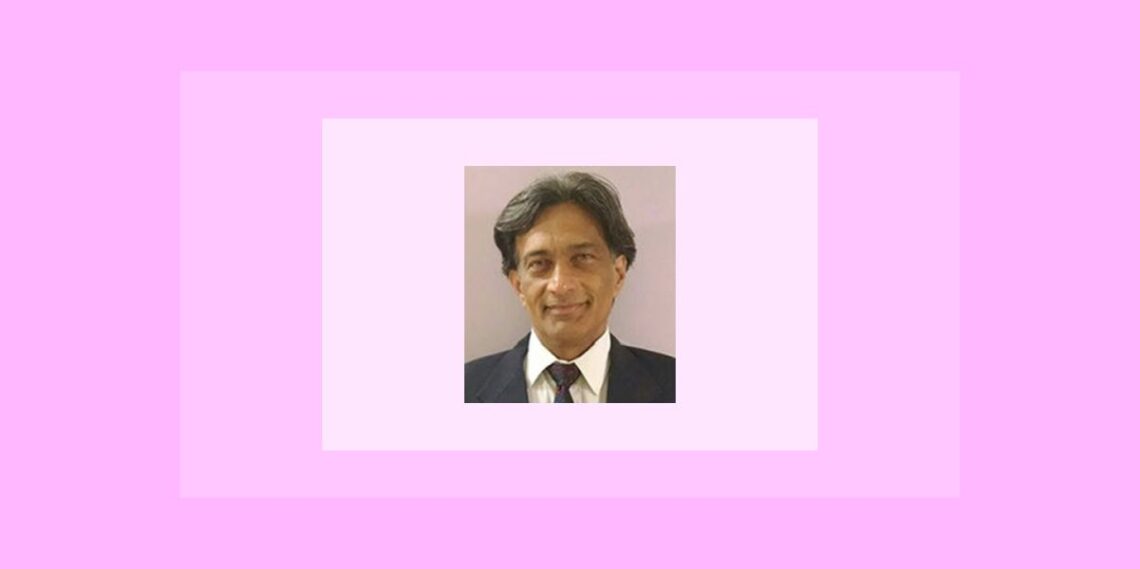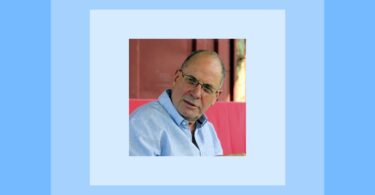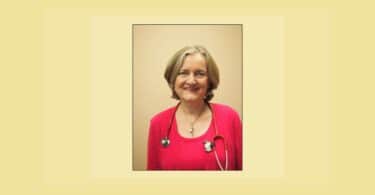Dr. Sanjay Modi, welcome to “Homeopathy for Everyone”!
It will be a pleasure to answer your questions.
Are you sure? I’ve been known to ask some very tough questions: Who are you?
Your question is fundamental to existence. I am still waiting for an answer to this question.
And so am I, but we only have two weeks.
If I relate myself to this question Homoeopathically, I get the answer in the First Aphorism where Hahnemann talks about Mission or Purpose. There is an interesting quotation which says your purpose on this Earth is not reached if you are still alive. Well it is very easy to get identified to the role we keep playing daily and justify the purpose attached to that role, hence Hahnemann recalls the Physician about his duty in restoring the sick to health. Hahnemann was very clear that we should not get identified to our system because the goal becomes very limited when I start thinking and behaving as a Homoeopath, I lose the wider perspective of my existence. The patient’s interest is better served by being a ‘Physician’ than becoming a ‘Homoeopath’. A detailed understanding could be had in my book Accurate Homoeopathy.
This may be a good time to ask you, then, what is “accurate homeopathy”? Are most of us being inaccurate?
Homoeopathy, as I see, is going through a difficult phase in terms of what Hahnemann calls ‘Impure sources to Materia Medica’, the sources which he strongly rejects as reliable pointers to prescribing have become our primary database! What Hahnemann was accusing the allopathic profession of doing 200 years ago, we find the Modern Homoeopath using the same tactics. This has generated lot of confusion and chaos amongst the profession. I have attempted to put Hahnemann’s viewpoint in today’s perspective so that application becomes easy yet effective. Science for its progress needs an unbiased approach. It is now well known that 35% of patients respond to Placebo. If Homoeopathy has to be taken seriously as a science it has to demonstrate more than 65% results constistently. For more than 70% results it would demand an accuracy on the part of the physician. In fact, practise has to be aimed at 100% for which even accuracy would not work since it will be more than a matter of Precision. Accurate homoeopathy is about challenging yourself against those value systems which we are carrying so that we become more purposeful to existence. It is about knowing Freedom.
This is becoming even more confusing than my interview in last month’s issue! Are you saying that modern homeopaths are making claims about remedies based on suppositions and over-night provings, etc.? And beyond that, are you saying we have to aim for 100 percent accuracy? Have you devised a plan for doing that?
According to Hahnemann only our’s is a PURE MATERIA MEDICA. He defines a Pure Materia Medica as one where the data is collected only through provings done on HEALTHY HUMAN BEINGS.
Let me just interrupt and remind our listeners that a Proving is a test on healthy human beings of a remedy, to find out what it will cause in over-dose; because that’s what it will cure in the sick. Please continue.
Hahnemann, the founder of homeopathy, has strongly objected to the inclusion of CLINICAL SYMPTOMS in the materia medica, since that data comes from DISEASED BEINGS. Are we paying any attention to his warnings? There is enormous flooding of symptoms and Materia Medica are growing fatter and fatter day by day and at this rate it will be difficult to seperate the GRAIN from the CHAFF. He was objecting to speculation in the medical field, since it’s the most noblest profession and what do we witness in the current era? There is no regulating body to look into this matter!No, I am not against New Provings which are conducted as per guidance of The Organon, since a few years back for example, LACHESIS was a new remedy but now it is one of the powerful remedies in homeopathy.
Naturally I would like to be 100% effective. Effectiveness comes from Precision. Aeroplanes also started around 200 years back, look at the care manufacturers have taken for the passenger’s safety, the landing is so precise that hardly any plane crashes no matter what the external condition is. The question is that 200 years after it’s discovery, can we claim that our patients also experience a similar security of safe landing when he is in our hands? I may sound very ambitious but the attempt is to be totally efficient. I am working for it.
What sorts of additions to the materia medica do you find troubling? Is it the additions based on speculation–that if the Calcarea person is like this, and the Muriatic Acid person is like that, then Calc-mur. must therefore be….? What about the over-night provings done at conferences? What about the “responses” of people not involved in the provings but who were “with” the provers, or in the provers’ rooms, does that trouble you? Which additions are you not OK with? Are you prepared to say, sir, unequivocally, that the materia medica on Elvis Presley’s Guitar, and the supposition that EPG 30C can treat any sort of convulsive speech disorder in the form of “unh huh huh, uh-hunh, unh-huh huh!” is totally without merit?
Who is Elvis Presley?
Let me just ask you this, is this really hurting homeopathy? Are people really prescribing “Rat’s Blood” and “Butterfly” just because they’re new additions to the materia medica?
Here’s what I’m seeing as causing “inaccurate” homeopathy: I sit here at hpathy.com, day after day, reading the posts on the discussion board from people who have been to see “homeopaths”. Again and again, year after year, I read about prescriptions of multiple remedies given all at once; I read about people who have been told to keep taking remedies that are aggravating (“It’s a good sign!”). I see many posts having to do with “treatment protocols” where the treatment is know even before the patient is seen! (“I start every case with Sulphur!”) Some “homeopaths” know when the potency is going to be raised before the treatment even begins! (“Take Nux v. 30C every day for the first week, then Nux v. 200C every day for the second week, then Nux v. 1M every day….” etc.), or they have the idea that one remedy has to follow the other, so they say, “Take Sulphur 200C for the first month, then follow that with Lycopodium 200C the next month….,” meaning, that if Sulphur is acting, they would actually begin Lycopodium despite the evidence that they already have the correct remedy! This is what I see, and I’m getting tired of it!
We get a lot of mail having to do with patients suffering aggravations who have been abandoned because the homeopath does not know how to antidote. They have not read the part of The Organon that says, if you start your case low enough, you won’t have to antidote a remedy because a better-chosen remedy will undo whatever mistake you have made (Aphorism 283). Still, it is incumbent upon every homeopath to know how to end whatever suffering he may have caused and few know how to do it, and yet are nonetheless very eager to start every case with a very high potency! [To learn how to antidote, see our interview with Diane Fuller, DIHom]
And then there’s Hering’s Law, and not really knowing it, and not being able to appreciate and respond to the way a case unravels, not knowing, for example, that the “disturbance” moves “outward” after a correct remedy; so, a psychotic person, for example, after a correct remedy, might get physically ill initially, which is a good sign if the mentals have cleared up, and we don’t allow the patient to believe that “homeopathy has made me worse,” and then allowing that to lead to a “panic prescription” on our part.
Even just not knowing what symptom to treat first in a complicated chronic case is a big problem, or always thinking that you have to start with the psychologial state even if a person has a life-threatening disease like cancer. Often the mentals that are sought out in such cases have to do with the chronic or constitutional state (“What was your childhood like?”) while the psychological symptoms that are concomitant to the disease are ignored or factored into the constitutional symptoms so that no clear picture is discernable. For example, you may have a Nat-mur. personality who has a stony hard tumor since an injury to the breast. Nat-mur is not the remedy at this time, it’s Conium, known for its stony hard tumors, especially when injury to the breast is the cause, despite the fact that you have before you a typical Nat-mur. presentation–the desire to be alone, fear of rejection, the reserve, the aggravation from the sun, the fastidiousness, the nail-biting…treating the cancer comes first! You might think this is obvious, but I can remember a journal article where a patient with with prostate cancer was given Nat-mur., his constitutional remedy; and it did solve a lot of his emotional problems–while the PSA test numbers kept climbing higher and higher!
Have I asked a question yet?
I can feel the concern you are expressing about the situation with Homoeopaths. I pray for the generation of Homoeopaths who would be practicing Homoeopathy a few years from now. I am not objecting to NEW provings. I am objecting to the idea that fresh homoeopaths hold that ‘what is OLD is traditional, non-progressive and DEFUNCT’. I am not disturbed to the extent Hahnemann is, the taste of which a reader can get in a chapter in MATERIA MEDICA PURA vol 2, where he precisely evaluates the sources to MATERIA MEDICA. A sample of this could be seen in the statement…….’thus the life and health of human beings were dependent on the opinion of a few blockheads, and whatever entered their precious brains went to swell the Materia Medica,’ this is his opinion regarding Doctrine of Signatures. My book titled ‘ACCURATE HOMOEOPATHY’ deals very clearly and constructively with the questions you have put up.
Let’s talk about the Doctrine of Signatures then. Maybe you can elaborate on what Hahnemann found troubling in his day regarding drawing conclusions about what a plant, for instance, may be good for, based on how it looks. (“It looks like an eye, so it must be good for the eyes!”) Who was guilty of this, the orthodoxy or the homeopaths?
Isn’t there something to be said, though, for learning a remedy based on understanding it in its original state? For instance, maybe one can best appreciate the Calcarea Carbonica constitution by learning that the remedy is made from the oyster shell, with the operant word being “shell”, as in protection. Calcarea people feel they need protection and therefore tend to be unadventurous, stay-at-home types, who worry excessively about the people who take care of them–family members; they worry about their house and safety. They feel best when they are surrounded by loved ones and friends who provide a “wall” of protection around them. They are very dependent on others. Can we call this the doctrine of signatures?
It is pertinent that each and every Homoeopath read the chapter on “Common sources of Materia Medica” from Materia Medica PURA Vol 2, so that the matter and debate becomes clear. As far as I am concerned, it does not matter who is guilty of starting it, in homoeopathy this line of thinking is inadmissible. We have to be clear that what started as a classroom teaching by KENT became a method for some Homoeopaths. I have cited Kent’s cases where such sort of literary and poetry does not exist. I am very certain that for Kent his classroom teaching did not percolate to his clinical practise. He wanted to infuse interest in the dried Materia Medica and the purpose was that the students remember the dull, boring Materia Medica. Teachers have a responsibility to see that whatever is said or written by them is not misunderstood; that is why Kent had maintained a purity while recording his cases. Instead of studying Kent’s materia medica it will be beneficial to study Kent’s Cases. We have confused a teaching aid as a prescribing aid.
You’re saying that what counts are the provings, is that right?
What counts is provings done on HEALTHY HUMANS only.
OK then, so you’re saying any conclusions drawn from how the substance “behaves” in nature would not help you when looking for an appropriate remedy, nor would the poisoning symptoms help you in selecting an applicable remedy, is that correct?
Also, if I could ask you, isn’t there a difference between drawing conclusions about a remedy in lieu of a proving and helping students to remember materia medica by getting them to connect the remedy with the substance as it is in nature?
Yes, any conclusions drawn from how the substance “behaves” in nature would not help you when looking for an appropriate remedy, nor would the poisoning symptoms help you in selecting an applicable remedy. It is important that readers realize that conjectures and speculations have no role in treating the sick. We not only conjecture on the basis for employing a remedy but we also conjecture a lot on the behaviour and attitude of our patients. I always tell my students to try analysing their own gestures and statements, so that they understand how difficult it is to identify the exact cause. The difficulty multiplies manifold when you have to select your similimum on that basis because you find that there is a part of Nat-Mur in you and also some Lycopodium and also some Lachesis, etc. Now think, if it is that difficult to analyse someone who is known for 24 hrs a day for 365 days, how could you be so certain about somebody with whom you have talked for just 2 hours? Psychologists say that Mind is like an Iceberg, you only see the tip. According to Hahnemann a system of medicine has to be RELIABLE so that there is a certainity involved while treating patients with Homoeopathy.
Definitely there is a difference between drawing conclusions about a remedy in lieu of a proving and helping students to remember materia medica by getting them to connect the remedy with the substance as it is in nature, this fact could be seen from Kent’s cases given in my book, ‘Accurate Homoeopathy’.
Thank you for clearing that up.
How can you best recommend your book?
Accurate Homoeopathy promises to make homoeopathic practice simple, straight and yet highly effective so as to assure easy accessibility with faster results. The book will guide you on a journey through the pre-conceived maps that you have been holding on to regarding various steps in Homoeopathy. There are two important deviations from conventional understanding in terms of
a) Totality of Symptoms and
b) Potency Selection. In brief, here are my thoughts about potency selection which I have based on the “Arndt – Schultz Law”:
The Arndt- Schultz Law states that “Weak stimuli increase the effective activity of an organ, strong stimuli check it and very strong destroy this activity.”
This is a BIological Law suggested by Rudolph Arndt and Schultz. A brief description is as follows:
Lower concentration – increases cellular activity (stimulates)
Moderate concentration – no change
High concentration – decreases cellular activity (depresses)
From the homeopathic standpoint:
1. Homeopathic remedies are Low concentrations or dilutions – which stimulate.
2. At the same time, we know that low potencies are weaker stimulations while higher potencies are stronger stimulations.
If a remedy needs to be prescribed based on the susceptibility, then:
Low susceptibility means a low reactivity which requires a stronger stimulation, ie, a higher potency. In comparison, 30C would be at a relatively higher concentration than a 1M. So the low concentrations with stronger stimulations would be a 1M which is preferable in low susceptibility.
High susceptibility means a high reactivity which requires a lower potency for stimulation. A 30C would be higher concentration but lower intensity stimulus than a 1M. The choice would be to start with a 30C in high susceptibility.
For more details on the book one could read the review https://hpathy.com/book-reviews/accurate-homeopathy/ on https://hpathy.com/
Leela was your student at college, correct? When you didn’t send in a photo, Leela mentioned that you looked an awful lot like Elvis Presley! So….
Thank you, Dr. Sanjay Modi, King of Rock ‘n’ Roll!
______________________________________________________
Dr. Sanjay Modi
A-402, Brentwood,
Hiranandani Gardens, Powai,
Mumbai 400076
Ph: 022-2579 7091, 022-2514 3639
Email: [email protected]
Editor’s Note: The photo above is of Elvis Presley and not the true photo of Dr. Sanjay Modi. We could not get his photograph and then somebody told us of the seeming resemblance between him and Elvis! So..





